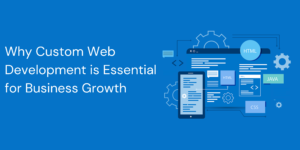Website Design and Development, both front-end and back-end development
Web Development encompasses a wide range of services that involve creating and maintaining websites and web applications. Let’s explore some of the key types of web development services:
Front-End Development
Back-End Development
Full-Stack Development
E-Commerce Development
Content Management System (CMS) Development
CMS development involves building and customizing content management systems like WordPress, Drupal, or Joomla. CMS developers create themes, plugins, and modules that enhance the functionality and design of websites. They enable website owners to easily manage and update content without extensive technical knowledge.
Mobile App Development
Web Design and User Experience (UX) Design - Web Development
Web design and UX design are crucial components of web development. Web designers create visually appealing layouts, select color schemes, and choose typography to enhance the overall look and feel of websites. UX designers focus on creating intuitive user interfaces, conducting user research, and optimizing the user journey to ensure a positive and engaging user experience.
Web Maintenance and Support
Web maintenance and support services involve the ongoing management, updates, and troubleshooting of websites and web applications. This includes tasks like bug fixes, security updates, performance optimization, and regular backups. Web developers provide technical support and ensure the smooth functioning of websites after their initial development.
These are just some of the key types of web development services available. Depending on specific project requirements, businesses can choose the most suitable services to create, enhance, and maintain their web presence.
Responsive Web Development
Responsive web development focuses on creating websites that adapt and respond to different screen sizes and devices. With the increasing use of smartphones and tablets, it’s essential to ensure that websites are mobile-friendly and provide a seamless browsing experience across all devices. Responsive web developers use techniques like fluid grids, flexible images, and media queries to design and develop websites that automatically adjust and optimize their layout based on the user’s device.
Custom Web Application Development
API Development and Integration
SEO (Search Engine Optimization)
SEO is a critical aspect of web development that focuses on optimizing websites for search engines. SEO developers implement strategies to improve a website’s visibility and ranking in search engine results pages (SERPs). This involves optimizing website structure, incorporating relevant keywords, creating quality content, and building authoritative backlinks. SEO developers ensure that websites adhere to search engine guidelines and best practices to drive organic traffic and improve online visibility.
Website Performance Optimization
Website Security and Compliance
Website Analytics and Tracking
Website Design and Development: Creating a Powerful Online Presence
Understanding Business Goals and Target Audience
The first step in website design and development is gaining a deep understanding of the business goals and target audience. This involves identifying the purpose of the website, whether it’s to showcase products, provide information, or facilitate online transactions. By understanding the target audience’s needs, preferences, and browsing behaviors, designers and developers can create a website that effectively engages and converts visitors.
Planning and Information Architecture
Visual Design and Branding
Front-End Development
Back-End Development
Content Creation and Management
Testing and Quality Assurance
Search Engine Optimization (SEO)
Implementing SEO best practices is crucial for optimizing the website’s visibility in search engine results. Developers and content creators focus on optimizing the website’s structure, metadata, keywords, and content to improve its ranking in search engines. By incorporating SEO techniques, businesses can increase organic traffic and improve their online presence.



